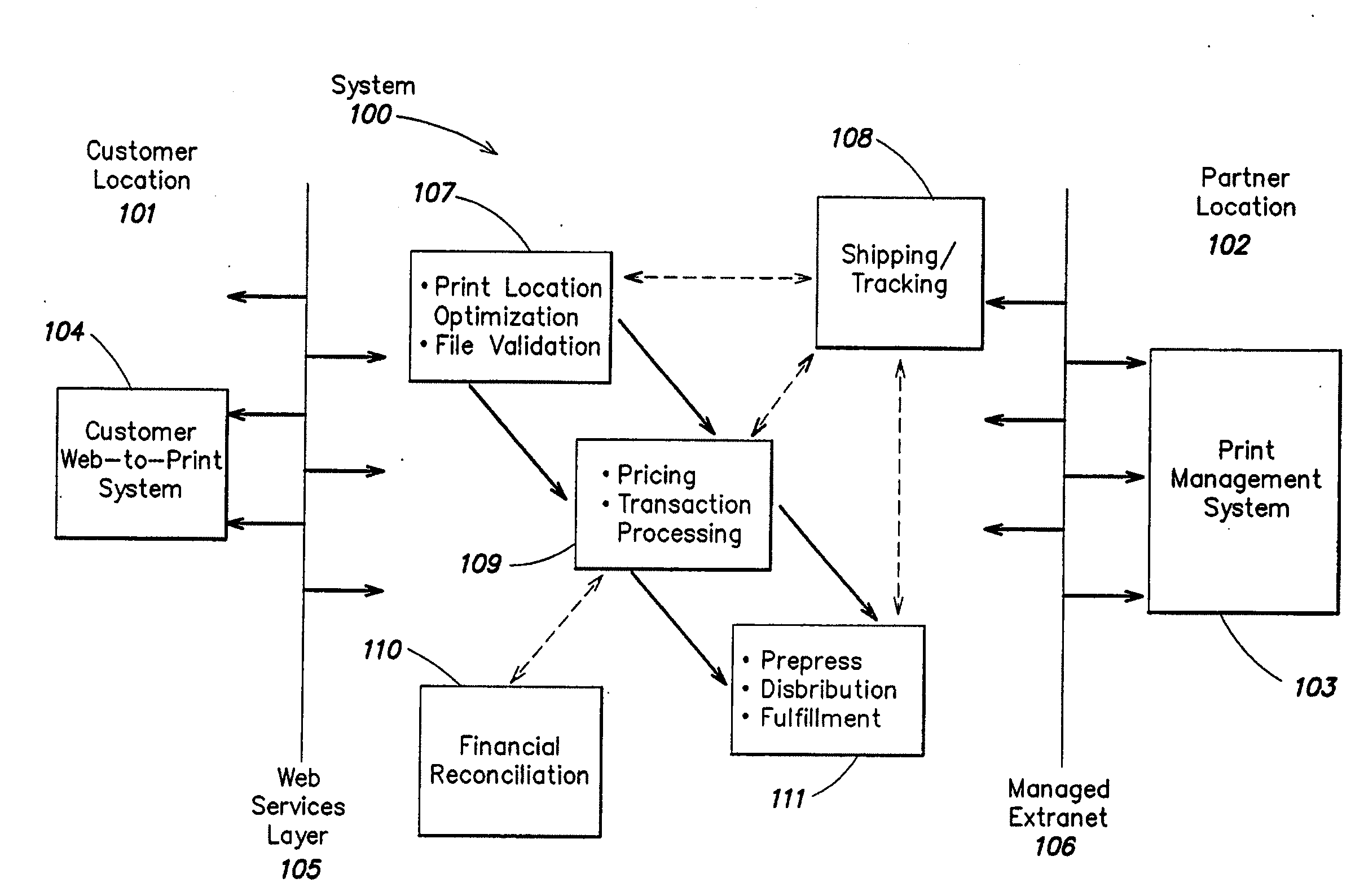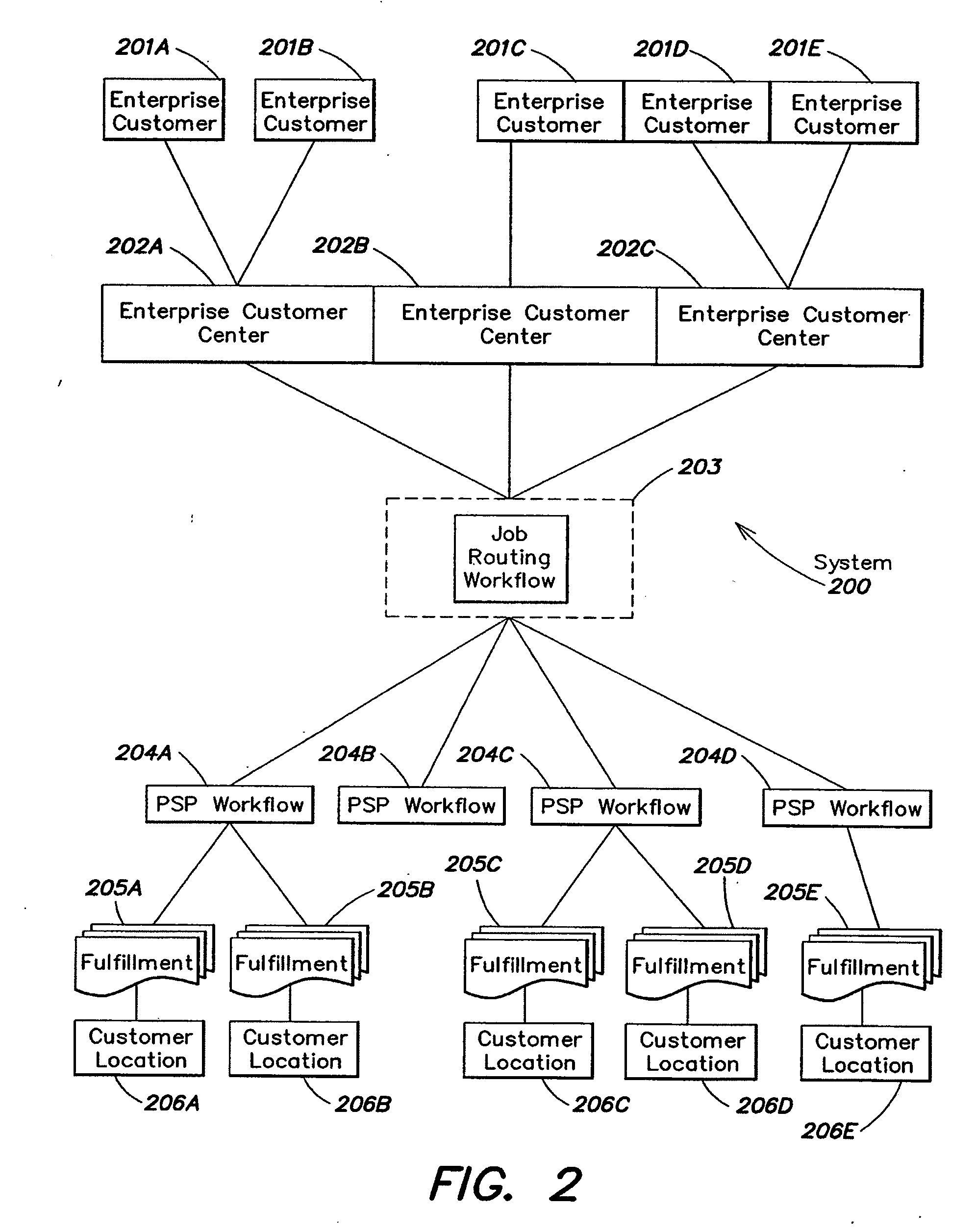Method and apparatus for printing in a distributed communications network
a communication network and distribution network technology, applied in the direction of digital output to print units, digitally marking record carriers, instruments, etc., to achieve the effect of cost-effectiveness and large capital investmen
- Summary
- Abstract
- Description
- Claims
- Application Information
AI Technical Summary
Benefits of technology
Problems solved by technology
Method used
Image
Examples
example gsf
Overview
[0071]In one embodiment, the GSF workflow is a process used by a GSF to estimate pricing provided to their Enterprise customers (ECs).
Workflow Steps
[0072]1 EC requests new product and pricing from GSF[0073]2 GSF calculates pricing[0074]a GSF uses HC price wizard to estimate regional wholesale pricing for[0075]i Specified product type based on formula elements[0076]ii Requested quantity breaks[0077]b GSF develops regional wholesale prices per quantity break for all regions (regional pricing is tagged with the appropriate regional code negotiated with Printable Technologies) and delivers this data in a downloadable spreadsheet (e.g., a Microsoft Excel file) to the GSF[0078]c GSF adjusts the spreadsheet by adding a retail margin to wholesale prices[0079]d GSF uploads the spreadsheet file into the Printable Technologies system[0080]e Printable Technologies system inputs and stores pricing for the item
GSF Pricing
[0081]The GSF defines regional prices (for example, there co...
PUM
 Login to View More
Login to View More Abstract
Description
Claims
Application Information
 Login to View More
Login to View More - R&D
- Intellectual Property
- Life Sciences
- Materials
- Tech Scout
- Unparalleled Data Quality
- Higher Quality Content
- 60% Fewer Hallucinations
Browse by: Latest US Patents, China's latest patents, Technical Efficacy Thesaurus, Application Domain, Technology Topic, Popular Technical Reports.
© 2025 PatSnap. All rights reserved.Legal|Privacy policy|Modern Slavery Act Transparency Statement|Sitemap|About US| Contact US: help@patsnap.com



